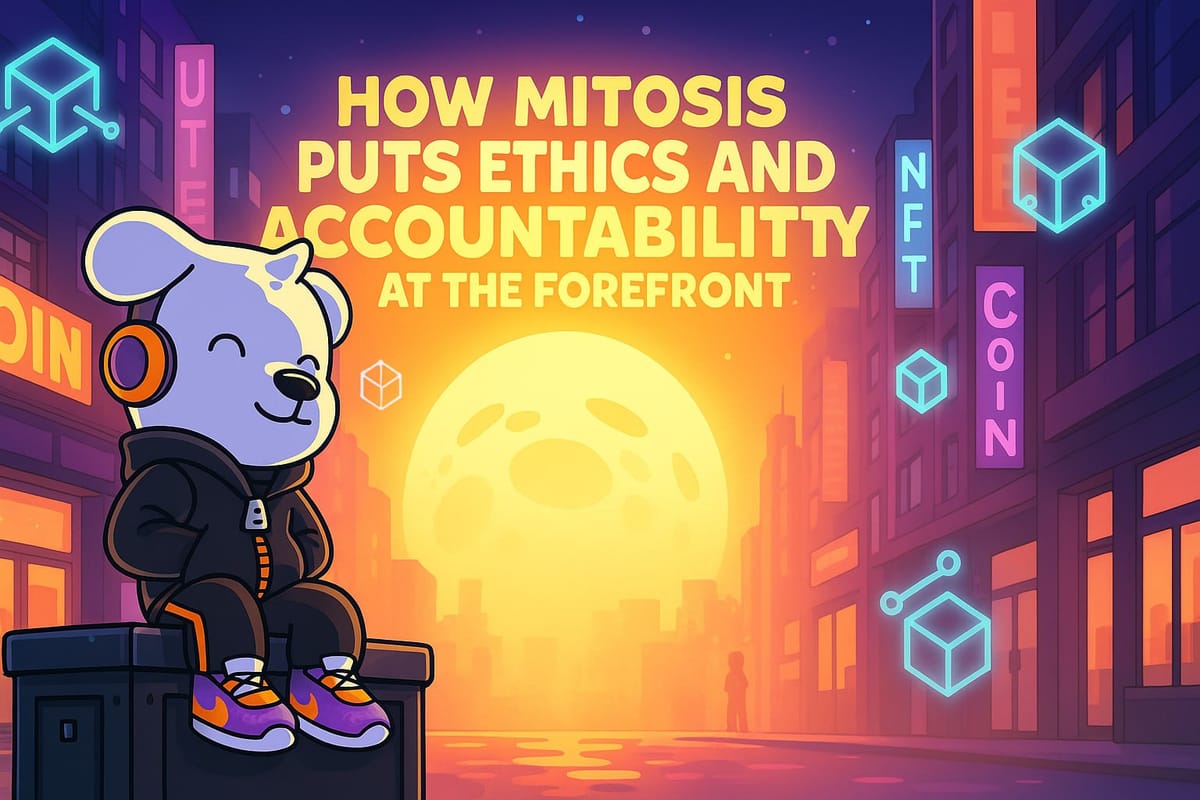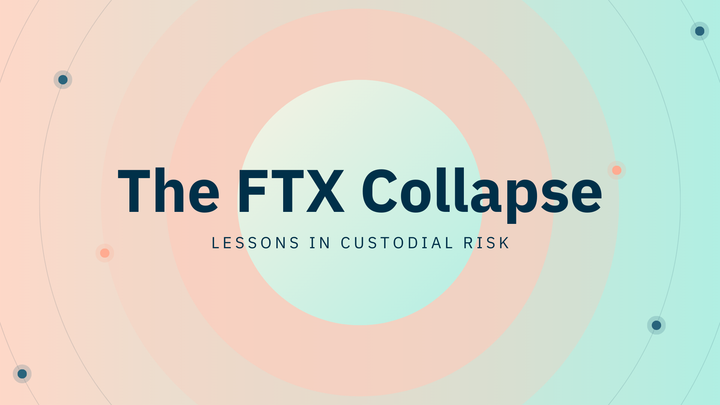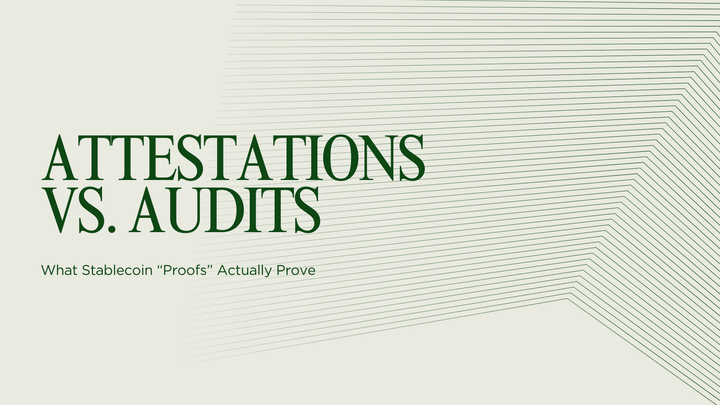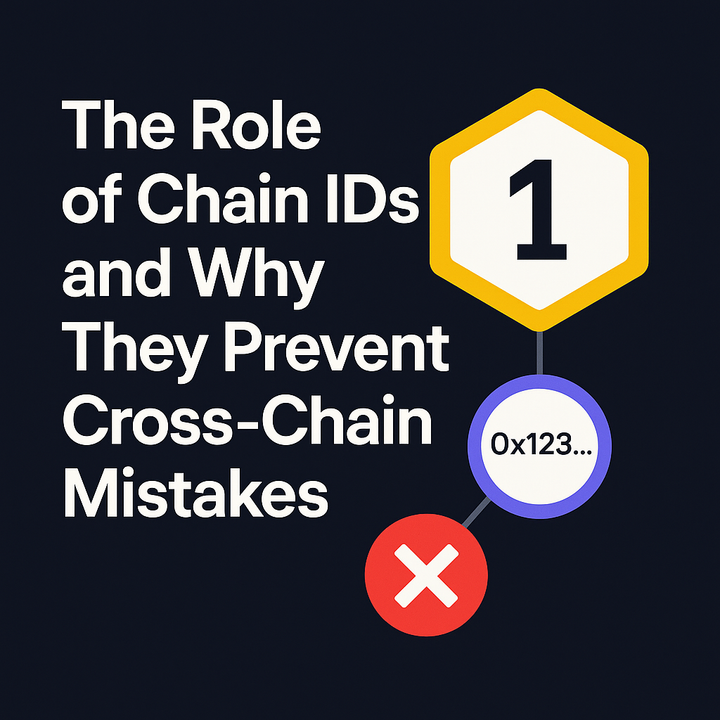A Code of Honor for Cross-Chain: How Mitosis Puts Ethics and Accountability at the Forefront

1. Introduction: Dilemmas of Trust in the Age of Interchain Interactions
Cross-chain technologies promise us a world without barriers, where assets and data move freely between blockchains, opening new horizons for DeFi, GameFi, and all of Web3. However, this freedom and power come with immense responsibility. Users, by entrusting protocols with their funds for interchain operations, essentially enter into a relationship where on one side of the scale is convenience and new opportunities, and on the other, potential risks associated with technological complexity and the possibility of errors or malicious actions.
Unfortunately, Web3 history knows many examples where user trust has been undermined:
- Bridge Hacks: Leading to multimillion-dollar losses.
- Opaque Governance: When decisions are made behind closed doors without considering community input.
- "Rug Pulls": When developers disappear with investor funds.
- Insufficient Risk Disclosure: When projects embellish reality, remaining silent about potential vulnerabilities.
These incidents not only cause direct financial damage but also create an atmosphere of skepticism, slowing down the mass adoption of genuinely useful and innovative Web3 technologies. In such an environment, projects that not only declare security but are also ready to undertake ethical obligations and implement concrete accountability mechanisms stand out favorably and build long-term trust.
Mitosis: Beyond Technical Security
Mitosis, as a liquidity protocol aiming to become key infrastructure for cross-chain interactions, recognizes that technical reliability alone (although it is an absolute priority, ensured through EigenLayer AVS and other measures) is not enough. To build a truly sustainable and trusted ecosystem, a foundation of ethical principles and transparent accountability mechanisms is necessary.
What does this mean for Mitosis?
- Prioritizing User Protection: The interests and safety of users must come first in all decisions concerning the protocol.
- Proactive Risk Management: Not just reacting to incidents, but constantly searching for, analyzing, and minimizing potential threats.
- Honesty and Openness in Communications: Providing complete and truthful information about the protocol's operation, its advantages, and its limitations.
- Readiness to Be Accountable: Developing plans and mechanisms for unforeseen events or errors.
The Goal of This Article: Unveiling Mitosis's "Code of Honor"
In this article, we will focus less on the technical aspects of security (which we have covered previously) and more on the ethical and operational commitments that Mitosis can (or should) undertake to protect its users and build trusting relationships with the community. We will examine:
- The importance of transparent governance of the EOL treasury and decision-making processes.
- Approaches to risk communication and providing educational resources for users.
- Potential incident response mechanisms and user interest protection in crisis situations.
- The role of the future Mitosis DAO in establishing and maintaining high ethical standards.
We aim to show that for Mitosis, creating secure and reliable cross-chain infrastructure is not only a technological challenge but also a moral obligation to the community that entrusts it with its assets and its future in Web3.
2. Mitosis's Mechanisms of Accountability and Ethical Standards in Practice
Declaring a commitment to ethics and accountability is an important first step. But real trust is built on concrete actions and mechanisms that demonstrate this commitment in practice. Let's examine what practical steps Mitosis can take to implement its "code of honor."
1. Transparency in Asset Management (EOL and Treasury)
- Specific Measures:
- Public Dashboards: Creation of publicly accessible dashboards displaying real-time composition and distribution of assets in the EOL treasury, liquidity volumes across different networks, and revenue generated by the protocol.
- Regular Reporting: Publication of periodic (e.g., quarterly) reports on the protocol's financial status, key liquidity management decisions, and audit results.
- Clear Criteria for Treasury Investments: If treasury funds are invested (e.g., in other DeFi protocols for yield generation), the criteria for selecting these protocols (security level, yield, risks) must be clearly defined and publicly communicated.
- Benefit to the Community: Allows any participant to verify the targeted and effective use of ecosystem funds, reducing concerns about opaque management.
2. Honest Risk Communication and User Education
- Specific Measures:
- Documentation with a Risk Section: Inclusion in the official documentation of a detailed and understandable section describing all potential risks of using Mitosis (technological, market, smart contract risks, risks of interacting with third parties like AVS or base blockchains).
- In-Interface Warnings: Integration of risk warnings directly into the user interface before transactions are made, especially if they involve new or experimental features.
- Educational Materials: Creation of articles, guides, webinars explaining how to use cross-chain protocols safely, how to recognize phishing, how to manage private keys, etc.
- Benefit to the Community: Increases user awareness, helps them make more informed decisions, and reduces the likelihood of losses due to misunderstanding or carelessness.
3. Incident Response Plans and User Protection
- Specific Measures:
- Emergency Response Protocols: Development and (where possible) public description of procedures in case critical vulnerabilities are discovered or a successful attack occurs. This may include mechanisms for temporarily halting the protocol ("circuit breakers") to prevent further losses.
- Insurance or Compensation Fund (Potentially): Consideration of creating a fund (e.g., from a portion of protocol revenue) that could be used for partial compensation of user losses in case of serious incidents not related to their own negligence. This is a complex issue, but discussing it demonstrates responsibility.
- Transparent Incident Investigation: In the event of an incident, conducting a thorough investigation involving independent experts and publishing its results (post-mortem analysis), including lessons learned and a plan to prevent recurrence.
- Benefit to the Community: Gives users an understanding that the project is prepared for unforeseen situations and has a plan to minimize damage and protect their interests.
4. The Role of the DAO in Establishing and Maintaining Ethical Standards
Decentralized governance is a key element for ensuring long-term accountability.
- Specific Measures:
- DAO Approval of an Ethical Codex: The community, through the DAO, can develop and adopt a formal ethical codex or set of principles that will guide the protocol.
- Oversight of Execution: The DAO can create mechanisms to monitor compliance with these principles by the core team (in the early stages) and other ecosystem participants.
- Resolution of Disputed Situations: The DAO can act as an arbiter in disputed ethical issues concerning the protocol's operation.
- Allocation of Funds for Security and Education: The DAO can make decisions on allocating resources from the treasury for additional audits, bug bounty programs, creation of educational content, and security enhancement initiatives.
- Benefit to the Community: Involves the community in shaping and maintaining ethical standards, making the protocol more accountable to its users.
Conclusion: Accountability as a Competitive Advantage
In the Web3 world, where technologies are complex and risks are real, projects that demonstrate not only technical superiority but also a deep commitment to ethics, transparency, and accountability will win the greatest trust and loyalty.
Mitosis, by prioritizing user protection and building an open dialogue with its community, is not just following "good manners." It is laying the foundation for its long-term success and sustainability. Concrete steps to ensure transparency in EOL management, honest risk communication, development of incident response plans, and DAO involvement in maintaining ethical standards are all elements of a "code of honor" that can distinguish Mitosis from many other projects.
This is an ongoing journey that requires constant effort and adaptation. But it is precisely this approach that will allow Mitosis not only to become an important part of cross-chain DeFi infrastructure but also to earn a reputation as a protocol that can be trusted – and trust, ultimately, is the most valuable currency in the decentralized world.
Learn more about Mitosis:
- Explore details on the official website: https://www.mitosis.org/
- Follow announcements on Twitter: https://twitter.com/MitosisOrg
- Participate in discussions on Discord: https://discord.com/invite/mitosis
- Read articles and updates on Medium: https://medium.com/mitosisorg
- Blog: https://blog.mitosis.org/



Comments ()